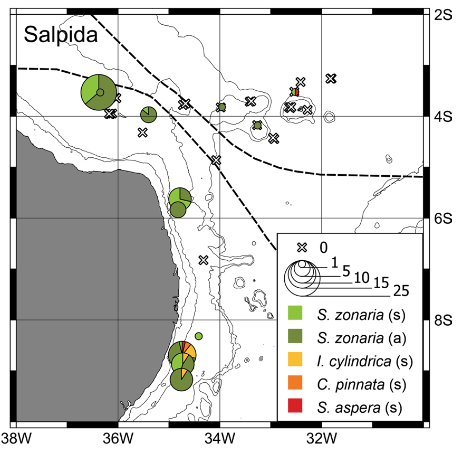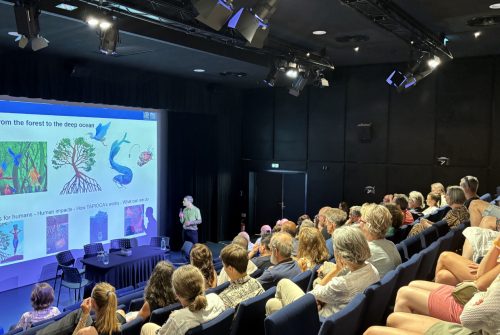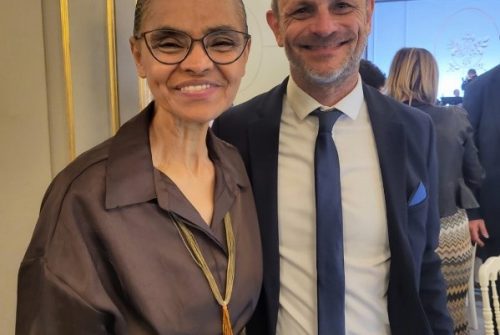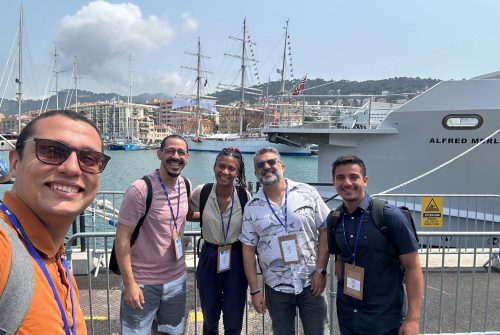
In western boundary current systems, strong currents transport oligotrophic oceanic waters towards the coast. Thaliaceans may have an advantage in these systems due their ability to filter small particles such as the bacterioplankton, typically responsible for the primary production in oligotrophic waters. Here, we evaluated the structure of the thaliacean community present in the tropical South Atlantic Ocean western boundary current system to test the hypothesis that species distribution and abundance are structured by the circulation and thermohaline features. For that purpose, we used data collected though 40 mm mesopelagic trawls above the slope and around oceanic seamounts and islands. Results reveal distinct patterns in the thaliacean community structure. Over the continental slope, under the influence of the strong North Brazilian Undercurrent, Pyrosoma atlanticum was highly abundant. Soestia zonaria was also present but in a lesser amount. Offshore, around oceanic islands and Seamounts under the influence of the central branch of South Equatorial Current, Doliolida spp. were the dominant thaliacean, co-occurring with P. atlanticum in lower abundance. Mesh selectivity is a potential drawback in these results since the coarse aperture may have lost smaller species and early life stages.
DOI: 10.1007/s10750-022-05007-3
Reference
Tosetto E.G., Silva BB, Díaz X. F. G., Neumann-Leitão S, Bertrand A. 2022. Thaliacean community responses to distinct thermohaline and circulation patterns in the Western Tropical South Atlantic Ocean. Hydrobiologia, 849: 4679–4692.






